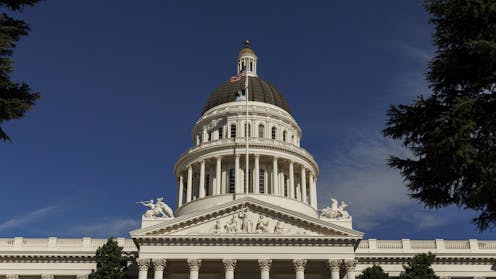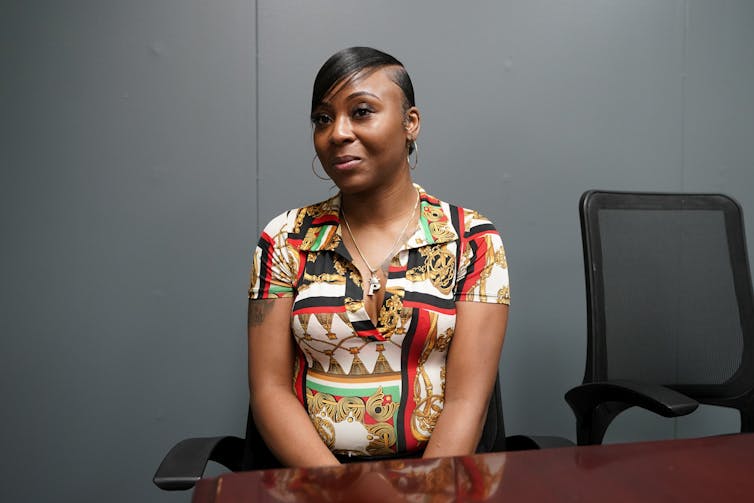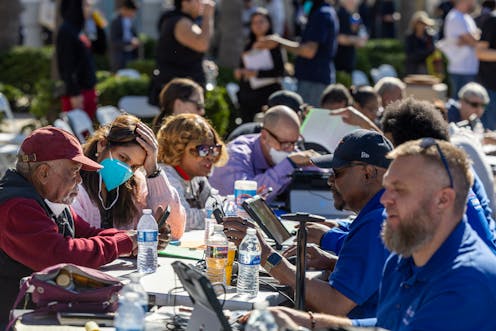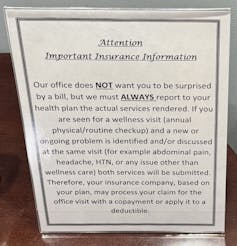Source: The Conversation – France in French (3) – By Florian Aumond, Maître de conférences en droit public, Université de Poitiers
Le 10 juillet dernier, la loi de programmation pour la refondation de Mayotte a été définitivement adoptée par le Sénat. Si ce texte comprend un volet social, l’un de ses articles organise la création de lieux où pourront être enfermés des mineurs étrangers. Une pratique pourtant en principe interdite par le droit français.
Adopté définitivement par le Sénat le jeudi 10 juillet 2025, le projet de loi de programmation pour la refondation de Mayotte s’inscrit dans le processus législatif engagé à la suite des dommages causés par le cyclone Chido, qui avait ravagé l’île dans la nuit du 13 au 14 décembre 2024. Ce nouveau texte affirme « l’ambition de la France pour le développement de Mayotte », à travers une série de mesures structurelles.
La loi couvre des domaines variés, comme l’encadrement de l’habitat illégal, la convergence accélérée vers le droit commun des prestations sociales, ou encore la modification du mode de scrutin applicable à Mayotte. Mais ce texte approfondit également la dérogation au droit commun en matière d’immigration, inscrit dans le Code de l’entrée et du séjour des étrangers et du droit d’asile (Ceseda) – pourtant en vigueur à Mayotte depuis 2014.
Le titre II de la loi, intitulé « Lutter contre l’immigration clandestine et l’habitat illégal », introduit ainsi une série de dispositions qui durcissent substantiellement les conditions de séjour des personnes étrangères à Mayotte. Deux titres de séjour « vie privée et familiale » se voient fortement limités : ils étaient jusqu’ici perçus comme permettant la régularisation d’un trop grand nombre d’étrangers. Désormais, l’accès à ces titres de séjour sera soumis à la condition d’être entré régulièrement sur le territoire et à une résidence à Mayotte depuis au moins sept ans pour les titres délivrés en raison des « liens personnels et familiaux ».
Le texte prévoit en outre des dispositions relatives à la lutte contre les reconnaissances frauduleuses de paternité et de maternité, ainsi qu’un chapitre sur la lutte contre l’immigration irrégulière. C’est au sein de ce dernier que se trouve une disposition significative de cette loi. Inscrite à l’article 14, elle porte sur la création de lieux de rétention « spécialement adaptés à la prise en charge des besoins de l’unité familiale ».
À l’instar des autres dispositions relatives aux droits des étrangers, la perspective de création de nouveaux centres de rétention « familiaux » a suscité de vives critiques dès la présentation du projet de loi. De nombreuses voix, notamment associatives, ont souligné la violation par cette mesure du principe d’intérêt supérieur de l’enfant. Il s’agit pourtant d’un pilier du régime juridique de protection des droits de l’enfant, depuis sa consécration par la Convention internationale sur le sujet, en 1989.
Pour Unicef France,
« la création prévue d’unités familiales […] ne (fait) que perpétuer une logique d’enfermement des familles avec enfants, alors que la fin de l’enfermement administratif des enfants était initialement prévue en 2027. »
La « zone d’attente », une fiction juridique qui permet l’enfermement des mineurs
Pour comprendre la réaction d’Unicef France, il convient de rappeler le cadre juridique actuel en matière de privation de liberté des personnes étrangères.
Le droit français distingue deux régimes : la rétention administrative concerne les étrangers déjà présents sur le territoire français et permet à l’administration d’exécuter une décision d’éloignement ; la « zone d’attente », quant à elle, ne s’applique qu’aux étrangers non admis sur le territoire français, arrivés par voie ferroviaire, maritime ou aérienne.
Cette « zone d’attente » s’apparente à une fiction juridique. Elle permet en effet de considérer qu’un étranger physiquement sur le territoire français n’y est pas juridiquement présent. Une telle fiction comporte des conséquences majeures pour les mineurs étrangers, car s’il n’est pas possible d’édicter une mesure d’éloignement à leur encontre. Il est en revanche tout à fait autorisé de leur interdire l’entrée sur le territoire, les contraignant ainsi à retourner dans leur pays d’origine ou dans le dernier pays par lequel ils ont transité.
Les zones d’attente sont donc des sas permettant de mettre en œuvre ces mesures. Celles-ci sont non seulement susceptibles de concerner les mineurs accompagnants – souhaitant entrer en France avec leur famille ou un adulte référent –, mais également les mineurs non accompagnés.
La loi n°2024-42 du 26 janvier 2024 pour contrôler l’immigration, améliorer l’intégration a enregistré une avancée significative par rapport à cette situation en consacrant l’interdiction générale de placer les mineurs en rétention, y compris lorsqu’ils accompagnent un adulte. L’article L.741-5 du Ceseda, inséré par la loi de janvier 2024, dispose désormais expressément que
« l’étranger mineur de 18 ans ne peut faire l’objet d’une décision de placement en rétention ».
Toutefois, l’entrée en vigueur de cette disposition a été repoussée pour Mayotte au 1er janvier 2027 en raison, selon le ministre de l’intérieur, « des spécificités de ce territoire – les mineurs rest(ant) moins de quarante-huit heures en moyenne dans le centre de rétention administrative de Mayotte, voire moins d’une journée » et, plus généralement, en raison des « difficultés particulières qui se posent sur ce territoire ».
La première justification ne convainc guère, si l’on constate que la durée de maintien en rétention n’est pas spécifiquement courte à Mayotte : elle est même souvent moindre dans l’Hexagone. Pour ce qui est des conditions spécifiques à Mayotte, s’il est indéniable que l’île connaît un contexte migratoire particulier, rien ne permet d’assurer que déroger au droit commun en enfermant des mineurs en migration y apportera une quelconque solution.
La France a déjà été condamnée pour l’enfermement de mineurs par la justice européenne
C’est dans ce contexte que s’inscrit l’article 14 de la loi de programmation pour la refondation de Mayotte. Il déroge à l’interdiction de placer en rétention un étranger mineur en introduisant de nouveaux lieux : des unités familiales « spécialement aménagées et adaptées », qui devront garantir « aux membres de la famille une intimité adéquate, dans des conditions qui tiennent compte de l’intérêt supérieur de l’enfant ».
Le gouvernement justifie la mesure par le fait qu’elle permettrait de « maintenir les capacités opérationnelles d’éloignement de ce public », c’est-à-dire les familles avec enfants.
Malgré les précautions terminologiques, ces « unités familiales » constituent bien des lieux de rétention administrative, ainsi qu’il ressort expressément de l’exposé des motifs de la loi, dans lequel le ministre des outre-mer évoque « une [unité familiale pour la rétention des mineurs] ». Leur création va donc à rebours des engagements pris par le gouvernement dans la loi de janvier 2024, qui en consacrait une interdiction générale. Ces engagements visaient à aligner le droit français avec la jurisprudence de la Cour européenne des droits de l’homme (CEDH), laquelle a déjà condamné à 11 reprises la France pour des situations de privation de liberté de mineurs en migration.
Le gouvernement a pris des mesures pour éviter que ce texte ne lui vaille de nouvelles condamnations par la CEDH. À la suite de l’avis du Conseil d’État relatif au projet de loi, il a été précisé que le placement en rétention des mineurs ne pouvait excéder une durée de 48 heures. Il est en effet connu que la CEDH retient la durée de la rétention parmi les critères pris en compte afin de conclure à la violation de l’article 3 de la Convention européenne des droits de l’homme, relatif à l’interdiction de la torture et des peines et traitements inhumains ou dégradants.
Elle s’appuie cependant également sur l’âge des personnes enfermées, et les conditions du maintien en centre de rétention administrative (CRA), où sont retenues les personnes migrantes en situation irrégulière. Or, dans un rapport remis en 2023, le contrôleur général des lieux de privation de liberté dénonçait les conditions qui prévalent dans le CRA de Mayotte – situé à Pamandzi –, notamment les difficultés d’accès à l’eau, le maintien des lumières allumées toute la nuit, l’état et l’insuffisance des sanitaires ou l’impossibilité de changer de vêtements.
Une mesure en contradiction avec toutes les recommandations des associations et des organisations internationales
La création de ces nouveaux lieux d’enfermement entre, par ailleurs, en totale contradiction avec les avis de différentes institutions et autorités indépendantes, comme le défenseur des droits, la commission nationale consultative des droits de l’homme, ou encore le contrôleur général des lieux de privation de liberté, toutes ayant rappelé que la rétention – même temporaire et aménagée – compromet le développement psychique et affectif de l’enfant.
Le défenseur des droits a ainsi mis en avant que « la place d’un enfant n’est pas dans un lieu d’enfermement, fût-il conçu pour accueillir des familles ».
La France va également à l’encontre des recommandations du Comité des droits de l’homme des Nations unies, qui l’a appelée à réexaminer les régimes dérogatoires en matière d’immigration dans les territoires ultramarins et à « accélérer l’extension de l’interdiction de la rétention administrative des mineurs à Mayotte ».
Saisi le 16 juillet 2025 par le premier ministre et plus de soixante députés, le Conseil constitutionnel devra se prononcer dans un délai d’un mois sur la conformité de ces dispositions avec les droits fondamentaux garantis par la Constitution.
![]()
Les auteurs ne travaillent pas, ne conseillent pas, ne possèdent pas de parts, ne reçoivent pas de fonds d’une organisation qui pourrait tirer profit de cet article, et n’ont déclaré aucune autre affiliation que leur organisme de recherche.
– ref. Rétention des mineurs à Mayotte : la loi qui inquiète juristes et associations – https://theconversation.com/retention-des-mineurs-a-mayotte-la-loi-qui-inquiete-juristes-et-associations-261611




















